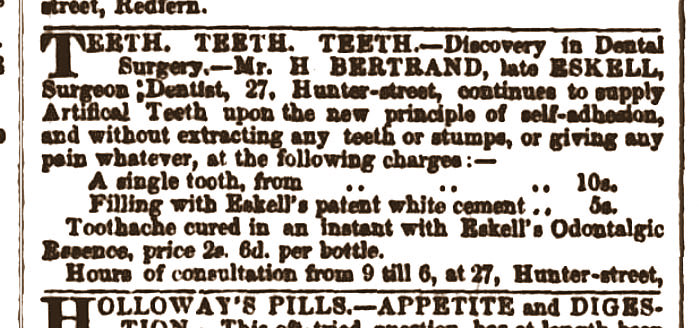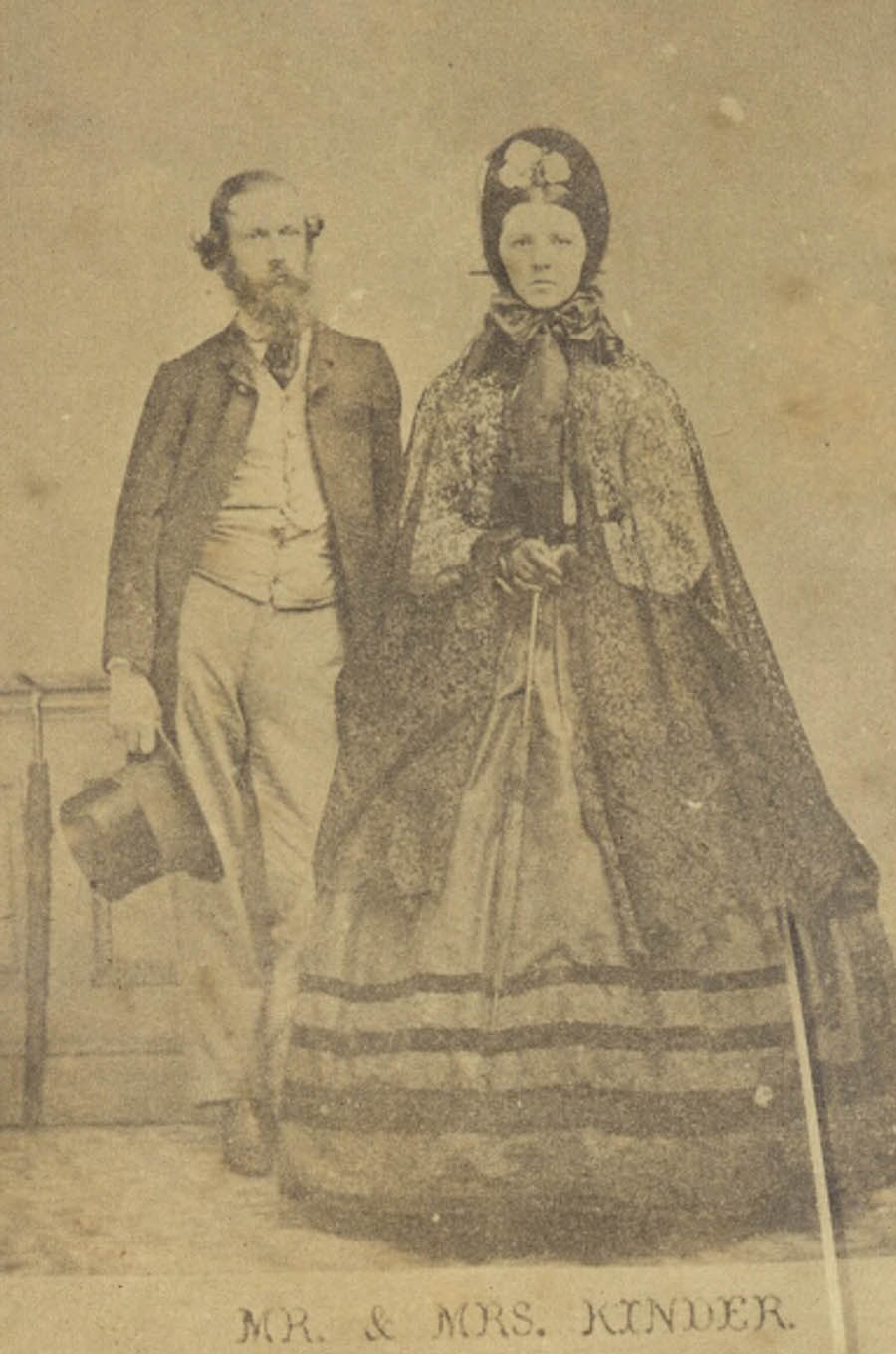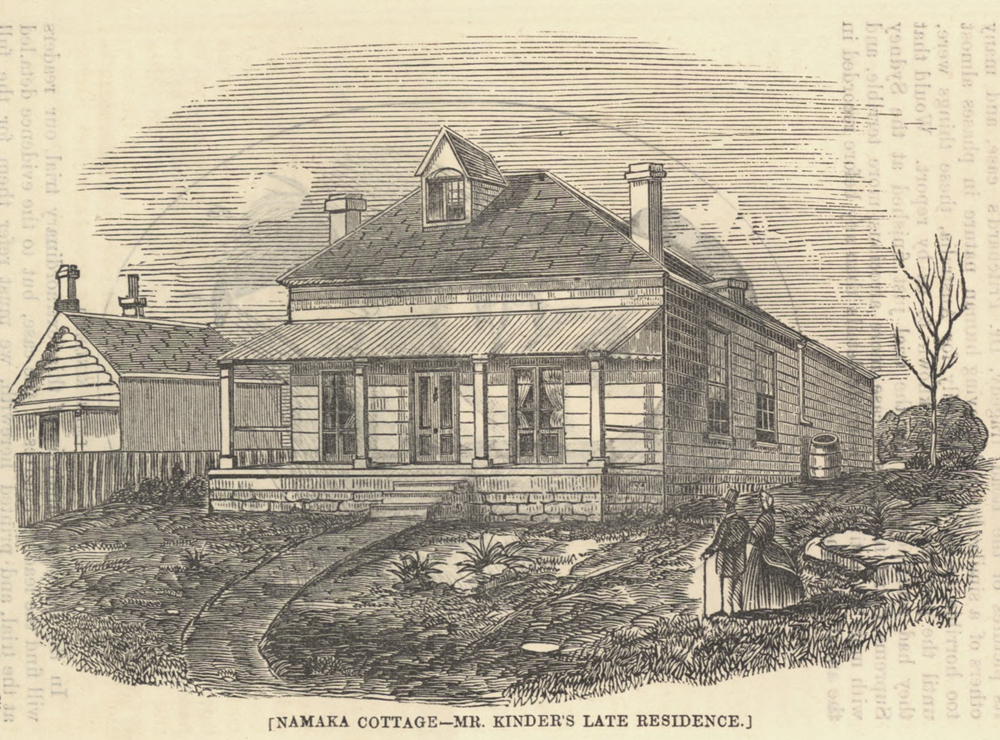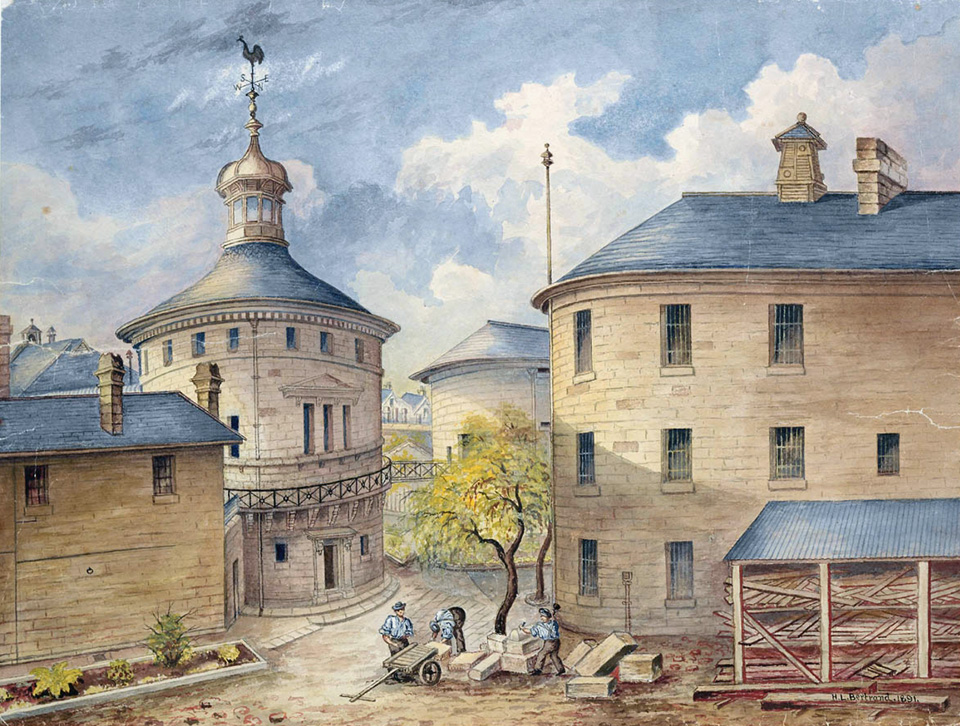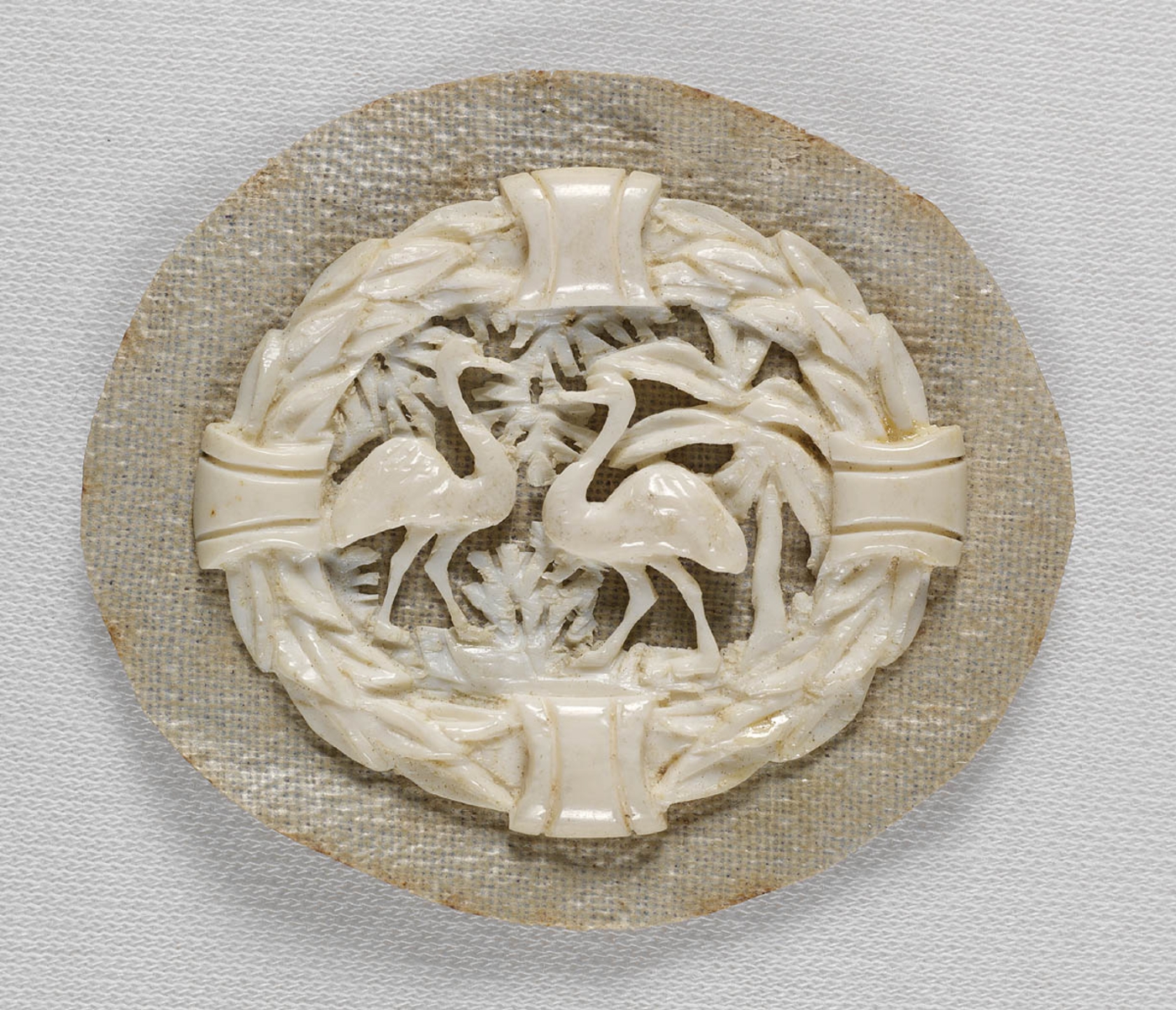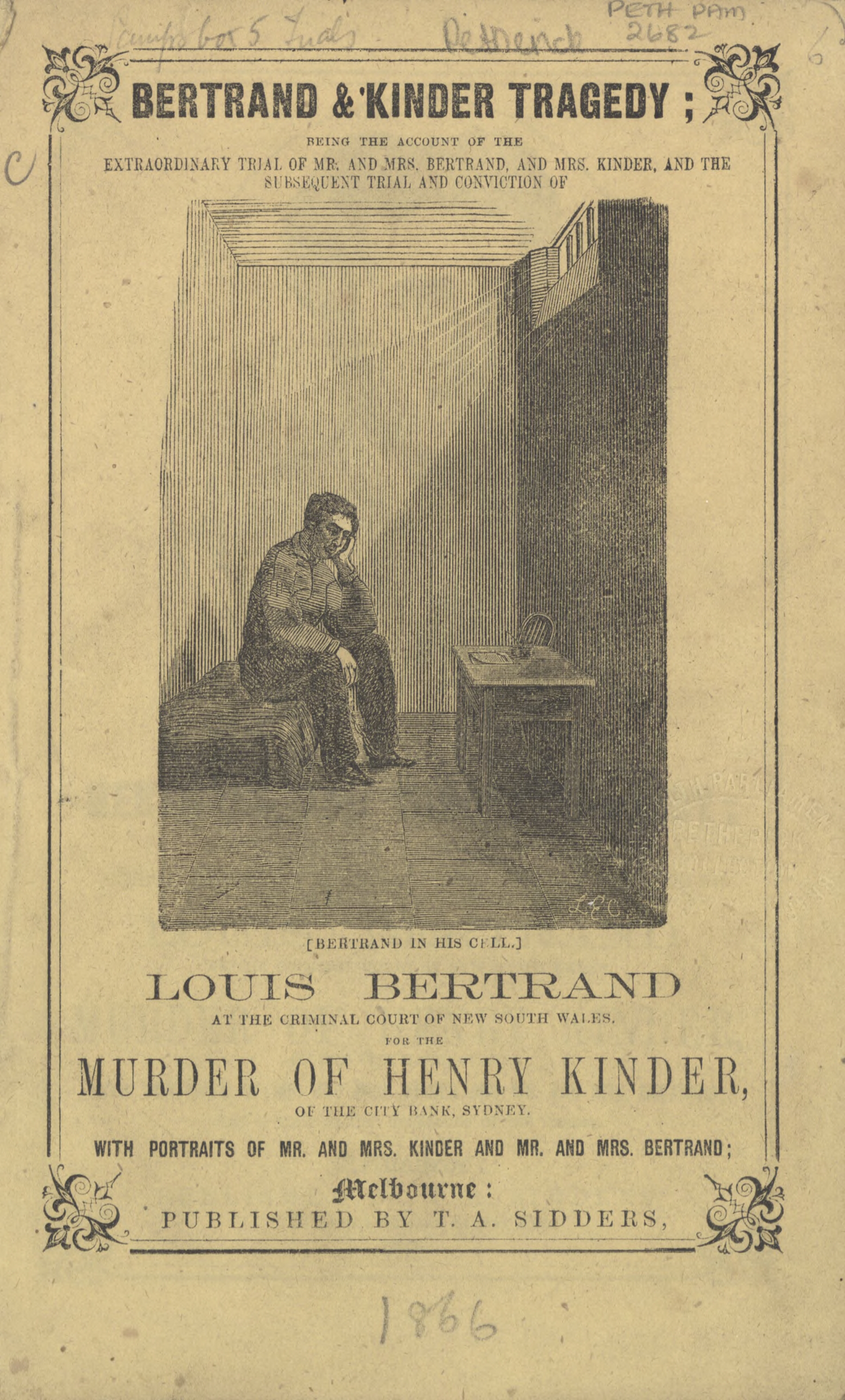The Dictionary of Sydney was archived in 2021.
Henry Louis Bertrand
Citation
Persistent URL for this entry
To cite this entry in text
To cite this entry in a Wikipedia footnote citation
To cite this entry as a Wikipedia External link
Henry Louis Bertrand
[media]The mad dentist of Wynyard Square, Henry Louis Bertrand, has intrigued Sydneysiders since 1865, when he was tried for the murder of Henry Kinder, exposing a series of salacious events in respectable society.
Family origins
The story begins in London with the Jewish family of Lipschutz (with various spellings) who had migrated from Holland and Belgium and whose males were traditionally dentists. Though most of his family retained their Jewish surname, Henry Lipshutz adopted the surname Bertrand and on the 1841 census gave his name as 'Henry Buckland.' He had married Marian Mier and on 26 September 1840 their only son, Henry Bertrand, was born at Little Stanhope Street, a tiny street in Mayfair. [1] In later life the son added the middle name Louis, possibly as a disguised version of Lipshutz. At the time of the 1841 census, the family were living at Knightsbridge, close to St Georges Hospital, where the older Henry died aged only 31 in 1844. [2] In 1851 his widow appears in the census as 'Marian Buckland,' an annuitant with three daughters and a son, Henry. Henry's future career was, however, assured. His father's family practised on both sides of the Channel, including Belgium, and the boy became fluent in French.
Emigration to Australia
Widow Marian Bertrand took her daughters to gold rush Melbourne and found top-rate husbands for her daughters and herself. Marian married Jewish dentist Louis Eskell a year after arriving in 1852. Alice married noted London architect John George Knight and Harriet married Knight's partner, Scottish architect Peter Kerr. Josephine married Charles Bright, journalist and lecturer, in 1859.
Young Henry had remained in London, Brussels and possibly Paris, but in 1860 travelled steerage to Sydney. Henry's mother, her new husband and their three children had moved to Sydney, and Louis Eskell was advertising his Hunter Street dental practice in the Sydney Morning Herald. Henry, aged 19, placed his own ad ten days after arriving, showing the theatrical flair and chutzpah which characterised his nature and which would later be part of his downfall.
MONS. BERTRAND, M.R.C.S.P., Chirugien Dentiste à la Cour Impėriale de France, vient d'arriver en Sydney, de la Rue St.Honorė, Paris, et peut être consultė tous les jours, à 28, Wynyard-square, de 10 à 4 heures.
[media]Bertrand thoughtfully provided an English translation:
MONS. BERTRAND, M.R.C.S.P., Surgeon Dentist to the Imperial Court of France, has now arrived in Sydney, from the Rue St Honorė, Paris, and may be consulted daily at his residence, 28, Wynyard-square, from 10 to 4 o'clock. [3]
In another ad he went even further, calling himself Dentiste à son Majestė lEmpereur des Francais, (ie Napoleon III) et à lEmpėratrice Eugėnie.
[media]Within 18 months, young Bertrand had taken over his stepfather's practice. Shortly afterward Louis Eskell was jailed for bankruptcy. After a couple of years of dentistry at the house in Wynyard Square, Henry found himself a wife, Jane King, and they were married in 1863 at the Scots Church by Reverend John Dunmore Lang. A daughter, Alice Mary, and a son, Henry Louis Bright, were born, the latter just five months before the event which would determine the futures of everyone involved.
Henry and Ellen Kinder
Henry Kinder[media] had emigrated from London to New Zealand and in 1860 had married Maria Ellen Wood, commonly known as Ellen. Kinder had an impeccable family background and a good position in banking and the wedding was conducted by his brother Rev John Kinder, a painter, photographer and headmaster of Auckland Grammar School. Ellen had two children but began an affair with sheep farmer Francis Jackson, and Kinder hit the bottle. In 1864 he brought his family to Sydney, probably in an attempt to escape both Jackson and creditors, although Jackson did unsuccessfully pursue Ellen to Sydney. [4] The Kinders rented Namaka Cottage at St Leonards, where Henry Kinder's life would end.
Ellen Kinder had not been in Sydney long before she sought attention from a dentist in Wynyard Square – the service quickly went beyond that normally offered by one's dentist. Bertrand and Ellen became infatuated with each other, acting with complete disregard for their spouses and children. After a few months of passion, Henry Bertrand concocted a plan to kill Henry Kinder, and make it look like suicide, and he very nearly got away with it. The several attempts he made before succeeding indicate this was premeditated murder, rather than a crime of passion, although Bertrand's attempt to disguise his identity while buying a pistol by dressing in his wife's clothing was clearly irrational. [5]
The murder and the trial
[media]Late in the evening of 2 October 1865 a doctor was called to treat a gunshot wound to Kinder's head, that Bertrand said had been occasioned when Kinder, in a drunken stupor, had held a pistol to his own head in front of both Bertrands. Kinder took four days to die. [6]
Two months later, after a blackmail attempt by Ellen's former lover Francis Jackson, police exhumed the body and found Kinder had poison in his stomach. Henry and Jane Bernard were charged with murder and Ellen was charged with being an accessory. Bertrand's secret diary, and evidence from his sister Harriett Kerr, to whom Bertrand had boasted about getting away with murder, sealed his prosecution. The case against the women collapsed due to lack of evidence but it caused a sensation throughout Australia and across the Tasman, where Kinder's family still [media]lived. It was even alleged that Bertrand had intimidated his wife Jane into sharing their bed with Ellen, causing as much outrage as the murder itself. [7]
Bertrand was sentenced to death on 23 February 1866, with execution set down for 19 March, however an appeal by the lawyer Julian Salomons succeeded in having the death sentence commuted to life in prison.
Bertrand in jail
[media]Henry did time in several gaols and in the lunatic asylum at Parramatta, but the place with which he is most associated is Darlinghurst Gaol. Bertrand developed an unexpected artistic talent, painting watercolours, carving bone objects and playing the organ for chapel services. He is often credited with designing stained glass windows for the chapel but probably painted only the frieze above the windows.
[media]Bertrand spent nearly 29 years in gaol, becoming the longest serving prisoner in New South Wales but perhaps the religious elements of his work encouraged the justice system to assess that he was contrite and no longer a threat to society. He was only 53 on his release on 17 June 1894. He was allowed to spend his first night of freedom at the Metropole Hotel but was deported on the first available ship for England.
Life after release
[media]Bertrand does not seem to have reconciled with his family. The death notice for his mother made no mention of a jailbird son. What then became of him? Wisely, he kept a low profile for the rest of his life. He practiced as a surgeon dentist under the name Edward Henry Burton in London (1901 census) and Portsmouth (1911 census). 'Burton' and his 'housekeeper' Caroline Amelia Ladd moved to Portsmouth about 1902 and, in 1909, she died after complaining she thought she was being poisoned. An inquest found that she died from natural causes but had Henry re offended?
'Henry Louis Bertrand, otherwise Burton' died on 11 September 1924 of 'Senile Decay and Asthenia Cardiac failure' at Portsmouth. [8] He was just a fortnight short of his 84th birthday.
Jane Bertrand and her children moved to Auckland, where their descendants still live. Ellen lost no time, marrying Humphrey Minchin Carden in 1867. The Cardens also briefly lived in Auckland, just down the road from the house of Rev John Kinder, who had charge of Kinder's children Henry and Nesta. In 1869 the Cardens, with their new daughter and Ellen's family emigrated to San Francisco. Ellen died there in 1883, aged 40.
Henry the murderer outlived everyone.
References
Edwards, John H. Henry Louis Bertrand: Dentist, Artist, Murderer. Dulwich Hill: Norrong Press, 2016.
Weaver, Rachael. 'The Kinder Tragedy'. Meanjin, Vol 70, No 4, Summer 2011: 58-68.
Travers, Robert. The Amorous Dentist. Sydney: Angus & Robertson, 1977.
Stuart Masters, Diana. Maria Ellen: The Other Mrs Kinder. Auckland: Kinder House Society, 2009.
Notes
[1] General Register Office, birth certificate, St George Hanover Square 1 30
[2] General Register Office, death certificate, St George Hanover Square 1 18
[3] Sydney Morning Herald, 28 February 1862
[4] There has been speculation that Jackson was the father of the second Kinder child, Frances Nesta, born at St Leonards in 1864. If true, it would certainly have added to Henry Kinder’s depression and drinking
[5] Sydney Morning Herald, 7 December 1865, 6
[6] Illustrated Sydney News, 16 December 1865, 3
[7] Rachael Weaver, 'The Kinder Tragedy', Meanjin, Vol 70, No 4, Summer 2011: 58-68, accessed 12 July 2012
[8] General Register Office, death certificate, Portsmouth 2b 477
.




